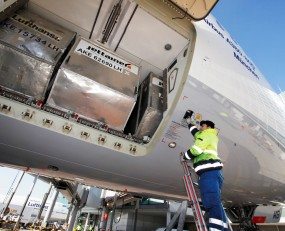
It was not so long ago that many regarded the air freight market as being in some form of structural slump.
Now it has bounced back with another year of growth looking to be sustained at least in the short-term.
The latest IATA figures show year-on-year growth in freight tonne-kilometres of 8% for the air freight sector at a global level, with all of the major markets demonstrating a positive trend. The key Asia Pacific market grew by 8.1% but both the North American and European markets grew faster at 9.6% and 9.9% respectively.
The rate of growth also appears to be edging upwards again, with November’s number being significantly higher than the 5.8% seen in October.
What is even better news for owners of aircraft is that utilisation of assets is improving as ‘Available Freight Tonne Kilometres’; that is the quantity of tonnage lift in the market, increases more slowly than demand, at 4%. That said, the ‘Freight Load Factor’ is still only 49.1%.
That said, IATA’s economists think that the cycle in the market has turned and in the medium-term there will be lower growth, pointing to the higher, double-digit growth seen earlier in 2017; “this surge in growth followed by a moderation is consistent with signs that the global restocking cycle peaked in early-2017, and the related cyclical upturn – in which air freight tends to outperform world trade volumes – looks to have run its course”.
However, as IATA points out, general economic growth for developed economies in the last quarter of 2017 was surprisingly strong, suggesting that underlying demand for airfreight ought to harden beyond the build-up of inventory. They comment that; “while the drivers of freight demand suggest that a repeat of the particularly strong growth seen in 2017 is unlikely in 2018, industry-wide FTKs [Freight Tonne Kilometres] still look set for a solid year of growth. We expect industry-wide FTK growth to come in close to its five-year average pace in the region of 4.5% in 2018 as a whole”.
This suggests a more difficult pricing environment in the air freight market for the likes of freight forwarders than in the sea freight market.
Source: Transport Intelligence, January 11, 2018
Author: Thomas Cullen